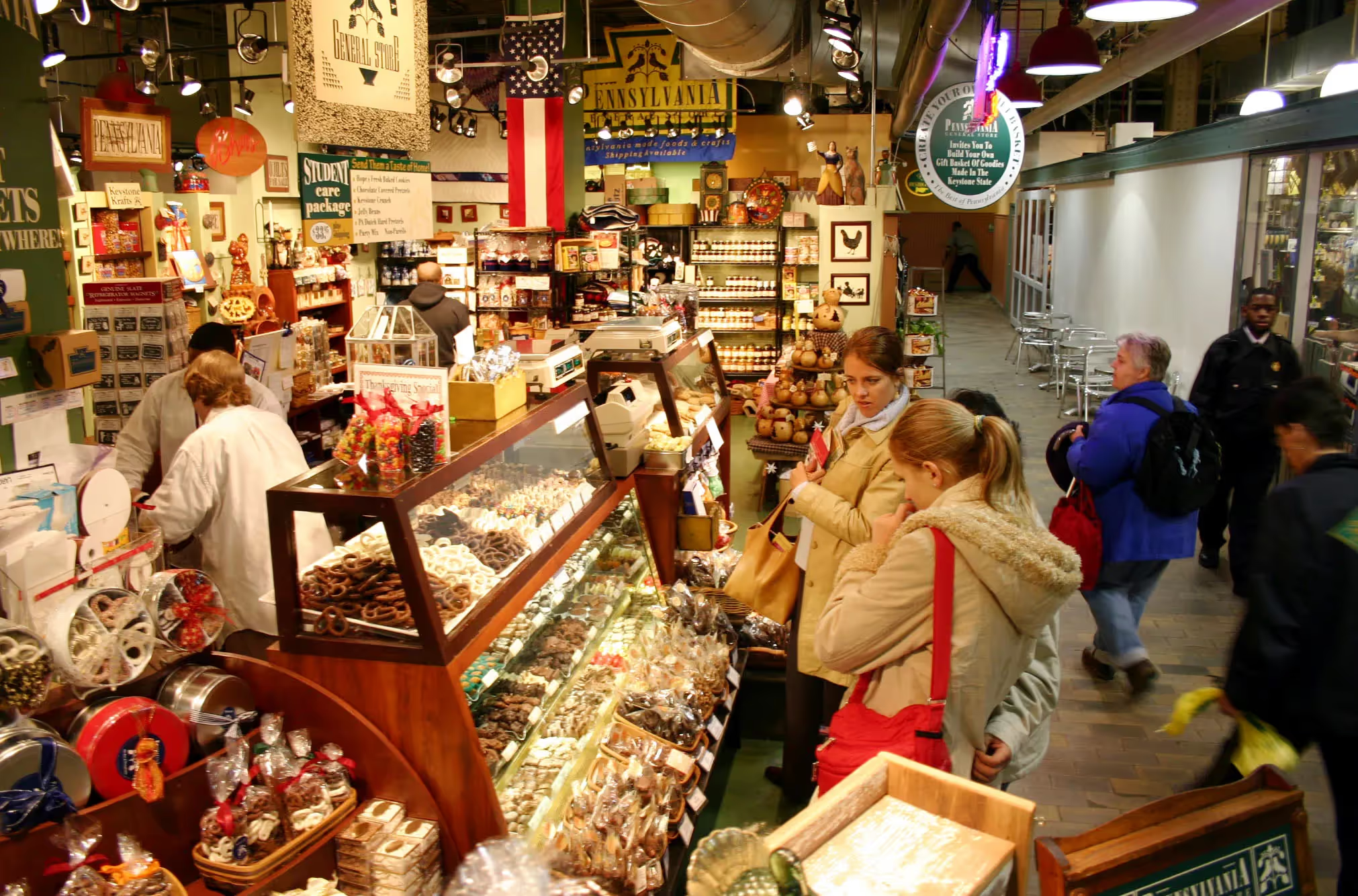A biweekly newsletter with public space news, resources, and opportunities.
A curated dispatch on all things public markets plus the latest announcements from the Market Cities Program.
Please note that these Hall of Shame nominations were written in a moment in time (most over a decade ago) and likely have since changed or even been transformed. If the above entry is now great, or still not so great, go ahead and comment below on how it has evolved or nominate it as a great place.

This 75,000 square-foot market hall opened in 1892 - then the world's largest indoor food market - but its roots go back to the 1600s.

The 122-year old Reading Terminal Market is located in the Market East part of City Center in Philadelphia, a nice central location for vendors and sellers to go about their business. With multiple entrances and exits, the market is easily accessible by foot, bicycle and public transportation. A seating area in the center of the market provides a central location for people to eat, shop, and socialize, making the market a culturally unique, multi-use destination. Known for its “festive old-world energy,” as the Philadelphia Enquirer remarked, Reading Terminal Market is one of the nation’s most successful public markets, and it is well known for having locally-made items, regionally-sourced meats and produce, and Amish specialties. Serving up Philly food favorites like hoagies, pretzels, and world-famous cheesesteaks, the market hosts twice-weekly walking tours, led by prominent food writers, where visitors can explore (and taste) the exciting history of the market.
Today’s Reading Terminal Market evolved from two historic markets, the Butchers and Farmers Market and the Franklin Market. When the Philadelphia and Reading Railroad Company purchased a block of Market Street in 1890 with the intent to build a new terminal, these merchants refused to relocate. The Railroad gave in and built a new market to house all of the vendors, located beneath the train shed and tracks. This new location featured a state-of-the-art cold storage area in the basement, marking the first time in Philadelphia history that seasonal products would be available all year.
In 1913 there were 250 food vendors and 100 farmers selling their goods, but suburbanization and railroad decline hurt the market badly enough that in 1959 the cold storage area was closed and dismantled, and by 1979, occupation of the market fell drastically. Revitalization efforts began in 1980, and in 1995 the city council created a nonprofit corporation to operate and manage the newly renovated Reading Terminal Market. The current market houses more than 75 independent small businesses and is considered one of Philadelphia’s historic landmarks.
Image credits: PPS Library, Brian Moran via Flickr, PPS Library
Website: www.readingterminalmarket.org
Twitter: @rdgterminalmkt
Facebook: facebook.com/readingterminalmarket
Instagram: @rdgterminalmkt



*Please note that these Hall of Shame nominations were written in a moment in time (most over a decade ago) and likely have since changed or even been transformed. If the above entry is now great, or still not so great, go ahead and comment below on how it has evolved or nominate it as a great place.